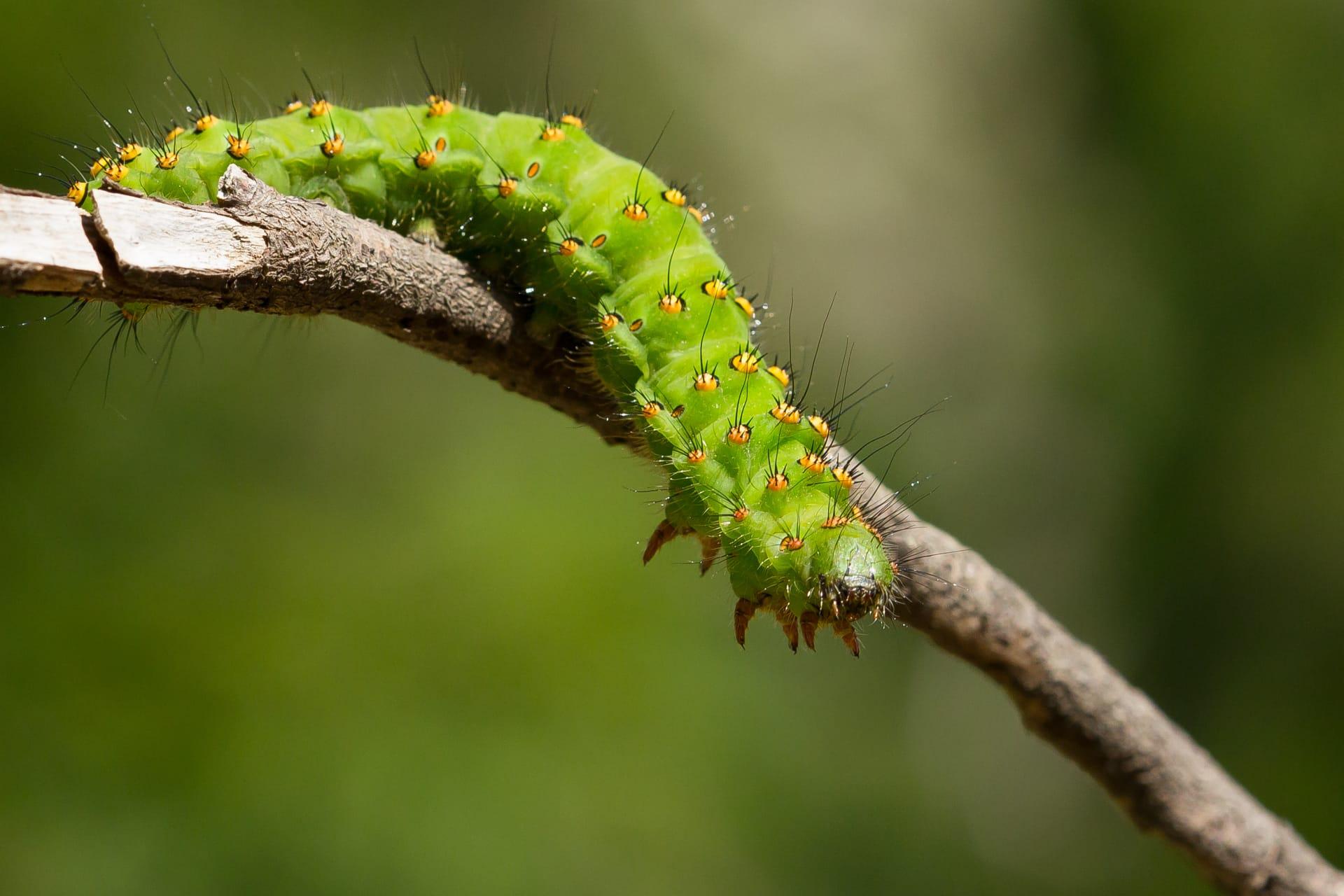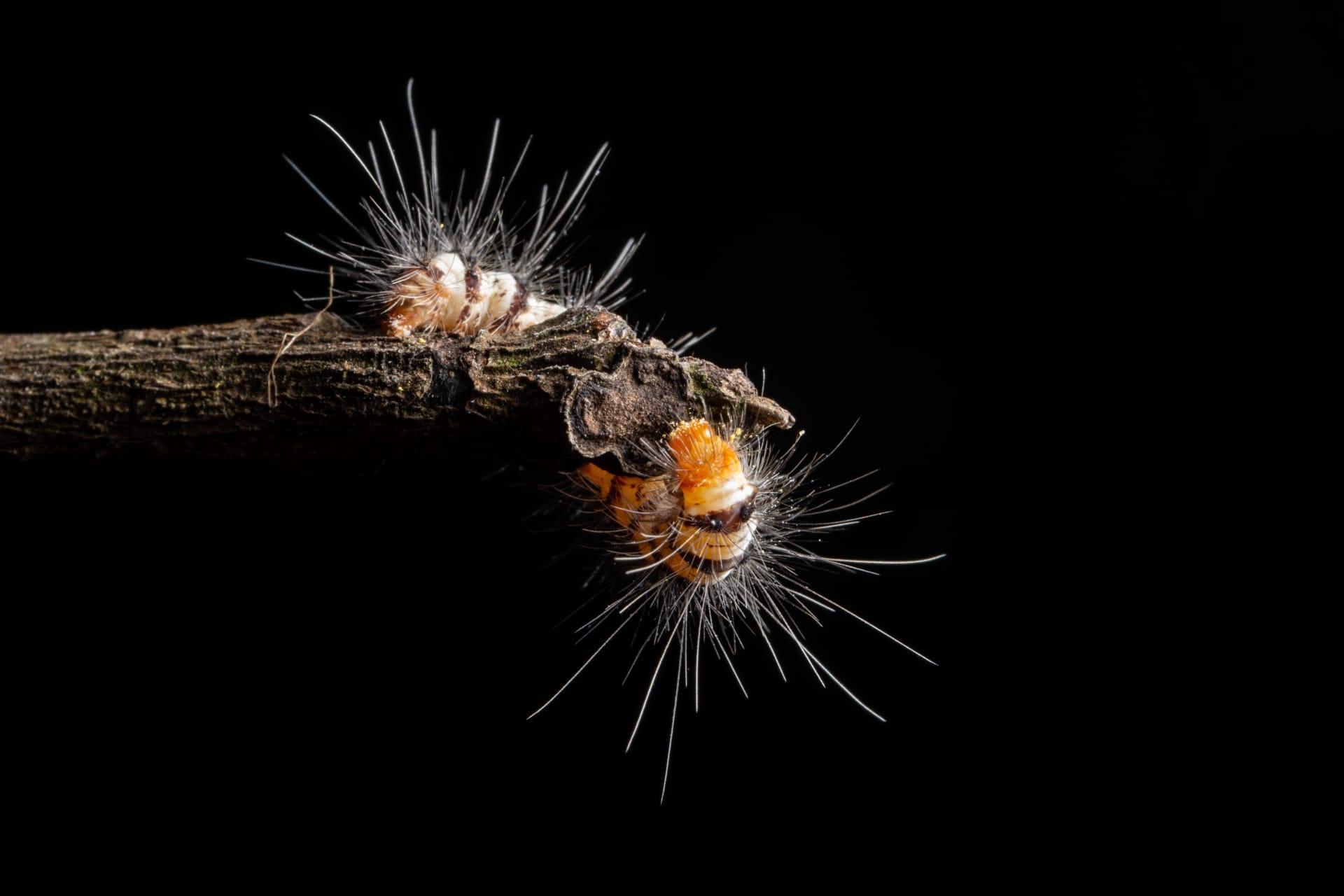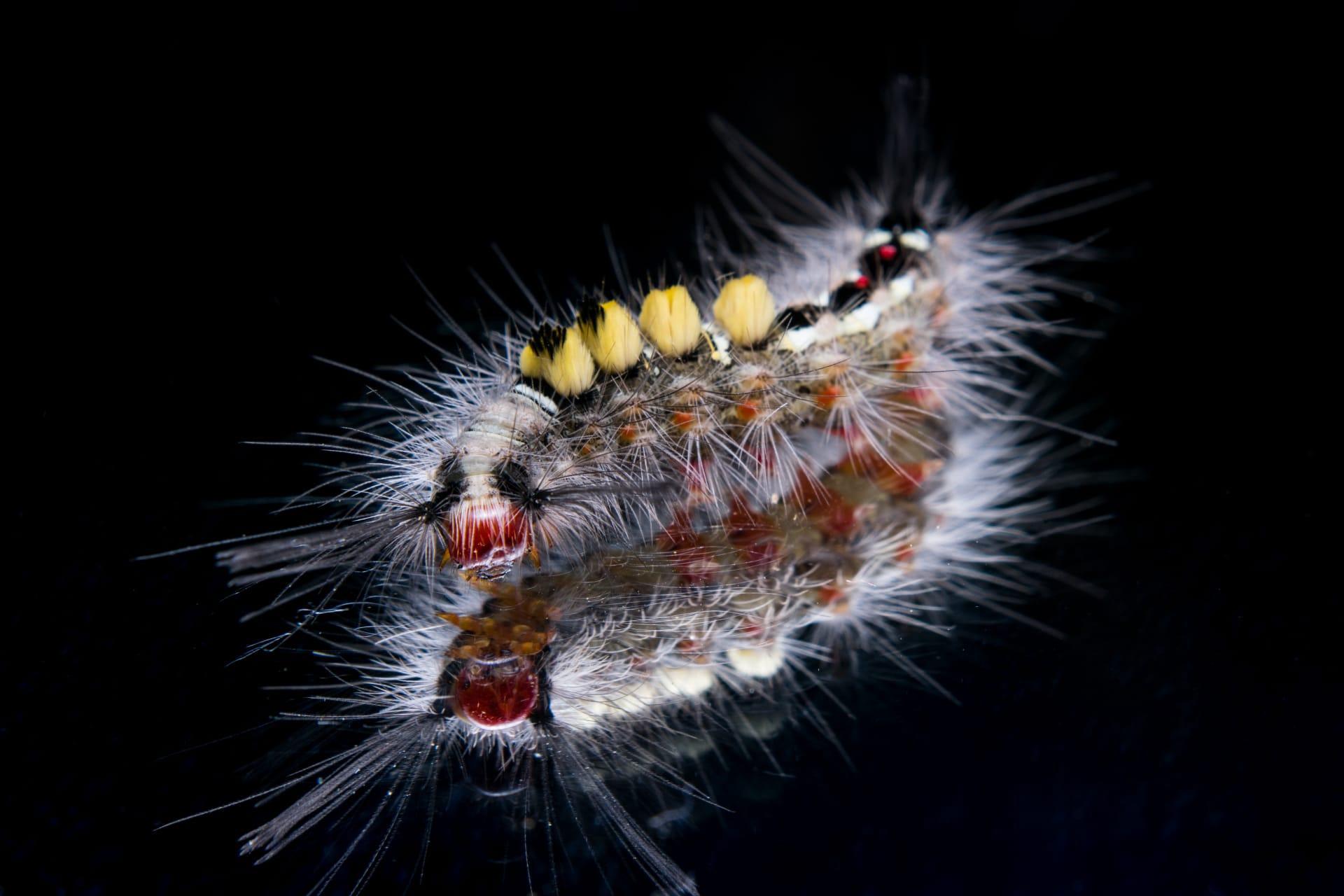Caterpillar Insect Characteristics
- Home /
- Mini Encyclopedia /
- Animal /
- Caterpillar Insect Characteristics
1
Caterpillars, the larvae of butterflies and moths, are fascinating creatures known for their distinct physical characteristics. Typically, caterpillars range in size from just a few millimeters to several inches long, depending on their species. Their bodies are soft, segmented, and come in various colors and patterns, often serving as a defense mechanism against predators. Regarding lifespan, caterpillars usually live for several weeks to months, which is solely the larval stage of their complete metamorphosis life cycle. This period is crucial as they prepare for their transformation into butterflies or moths.
One of the most remarkable organs of a caterpillar is its silk-producing glands. Located near the mouth, these glands produce silk, a protein fiber. Caterpillars use this silk for various purposes: to secure themselves to leaves, construct protective shelters, or build cocoons during their pupal stage. This silk is incredibly strong and versatile, playing a pivotal role in their survival and metamorphosis. The ability to produce silk is not only vital for their life cycle but also has fascinated scientists and textile industries for its strength and elasticity.

2
Question: Do all caterpillars turn into butterflies?
Answer: A common misconception is that all caterpillars become butterflies. In reality, caterpillars are the larval stage of both butterflies and moths, which belong to the order Lepidoptera. The primary difference lies in their adult forms. Butterflies typically have slender bodies and hold their wings vertically over their bodies when at rest, whereas moths have more robust bodies and rest with their wings spread flat. The metamorphosis process, where caterpillars transform into either butterflies or moths, is a remarkable example of nature's ingenuity, involving significant physiological changes within a relatively short period.

3
Caterpillars have a unique way of moving, often described as a 'crawling' or 'inchworm' motion. This movement is due to their distinct body structure, where they have three pairs of true legs at the front and several prolegs (which are not true legs) at the rear. By contracting their muscles and anchoring with their prolegs, caterpillars can propel themselves forward in a rhythmic, wave-like motion. This method of locomotion is not only efficient but also aids in escaping predators.
In terms of feeding, caterpillars are primarily herbivores and have voracious appetites. They eat a wide variety of plant materials, including leaves, stems, flowers, and fruits. Some species are even specialized to feed on specific plants. Their strong, specialized jaws, called mandibles, enable them to chew through tough plant material. This high consumption of plant matter is crucial for their rapid growth. During this stage, they can increase their body mass several thousand times before entering the pupal stage.

4
The habitat of caterpillars is closely linked to their food sources and can vary widely among species. They are found in diverse environments, from rainforests to deserts, wherever their host plants grow. Some species prefer specific plants, making them more specialized in their habitat choice. Caterpillars are also adept at adapting to their surroundings, using their coloration for camouflage to blend in with leaves, stems, or even the ground to avoid predators.
Reproduction in caterpillars is an intriguing aspect of their life cycle, though it primarily occurs in their adult butterfly or moth stage. However, the foundation for future reproduction is laid during the caterpillar stage. They undergo several molts, growing larger and storing energy and nutrients necessary for their transformation into adults capable of mating. The metamorphosis process is a critical phase, where the caterpillar transforms into a pupa and eventually emerges as a fully formed butterfly or moth, ready to reproduce and continue the life cycle.

5
Book: "The World of Caterpillars" by Dr. Linda Harper, published in the USA in 2015. This book offers an in-depth look into the intriguing world of caterpillars. Dr. Harper, an entomologist, explores various caterpillar species, their habitats, and behaviors. The book is filled with vivid photographs and easy-to-understand explanations, making it suitable for both enthusiasts and scholars. It delves into the complexities of caterpillar biology and their role in the ecosystem, presenting a comprehensive guide to these fascinating creatures.
Book: "Caterpillars in Art and Nature" by Samuel Johnson, published in the UK in 2018. This unique book blends the scientific study of caterpillars with their representation in art and culture. Johnson, a naturalist, and artist, examines the symbolism of caterpillars in different cultures and their portrayal in various art forms. The book also provides detailed descriptions of numerous caterpillar species, their life cycles, and ecological significance. It's a compelling read for those interested in both the natural world and its artistic interpretations.